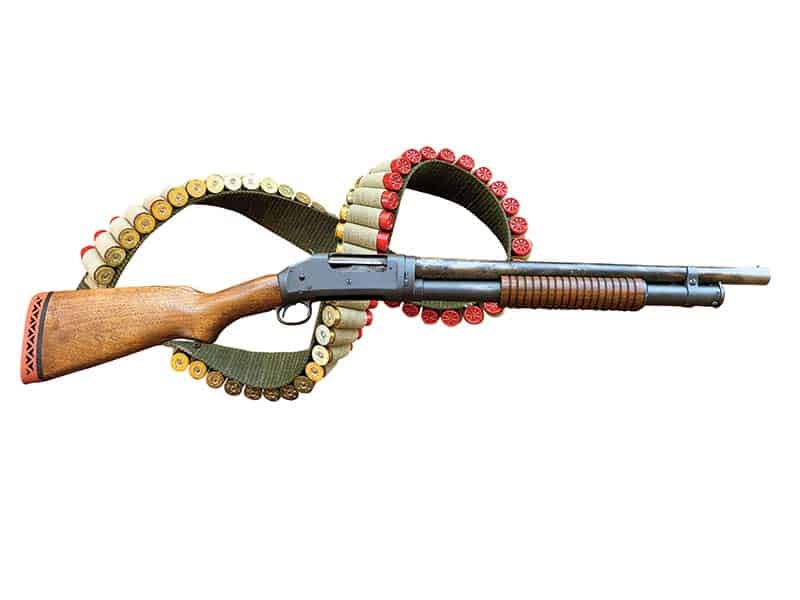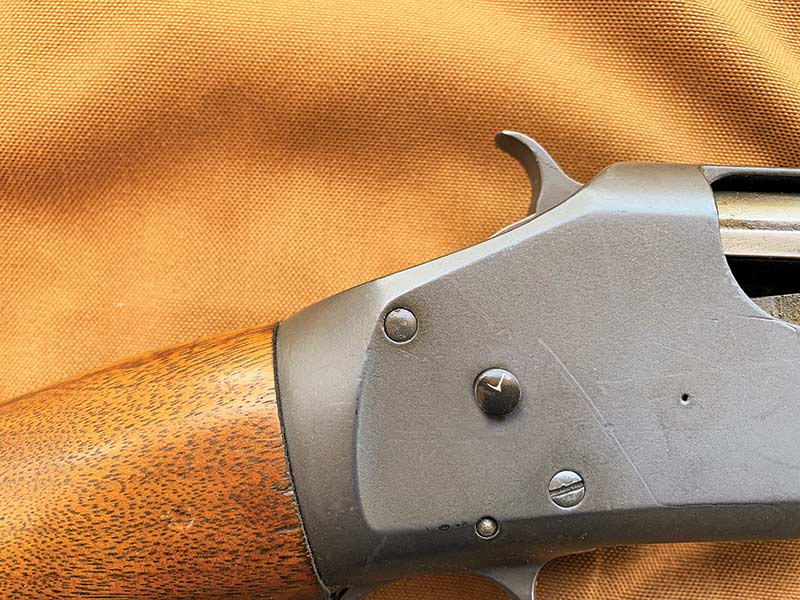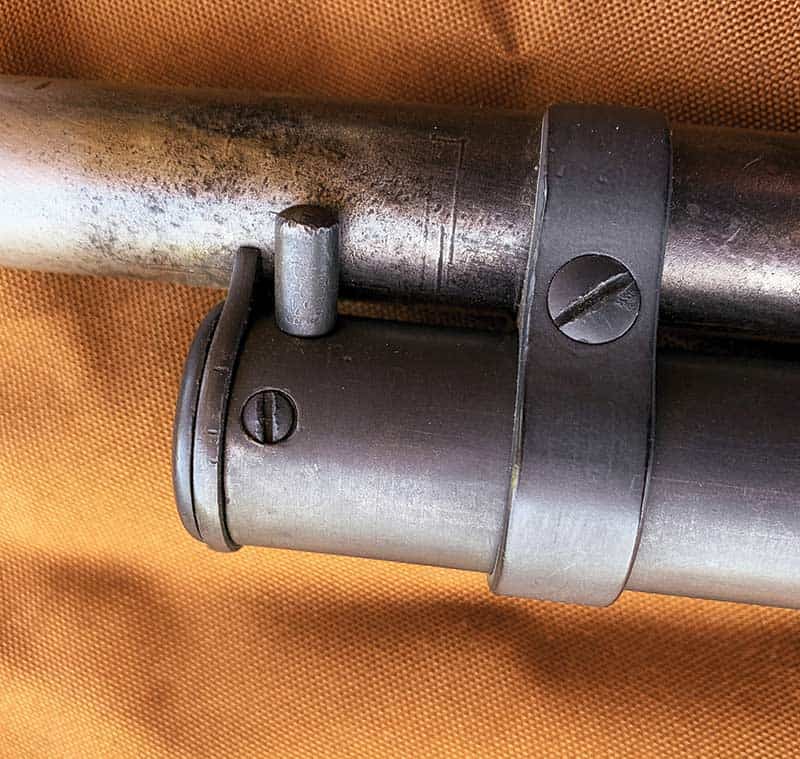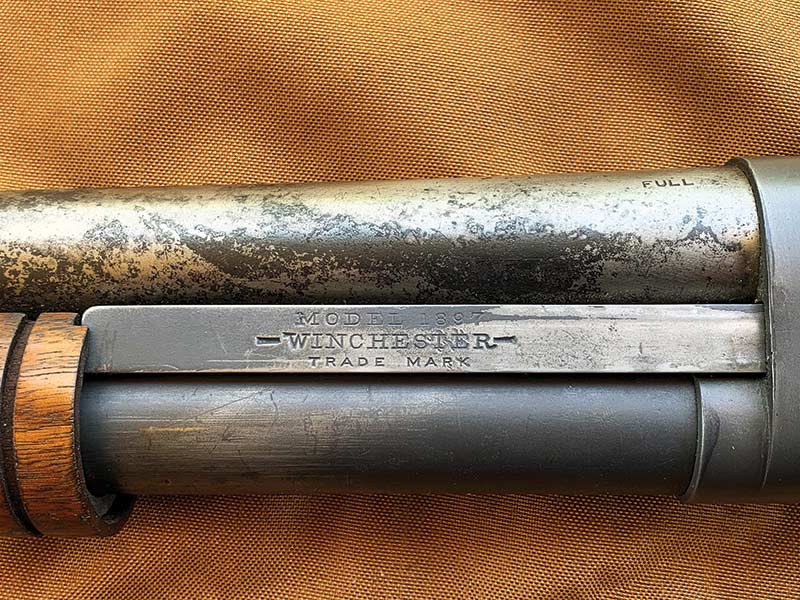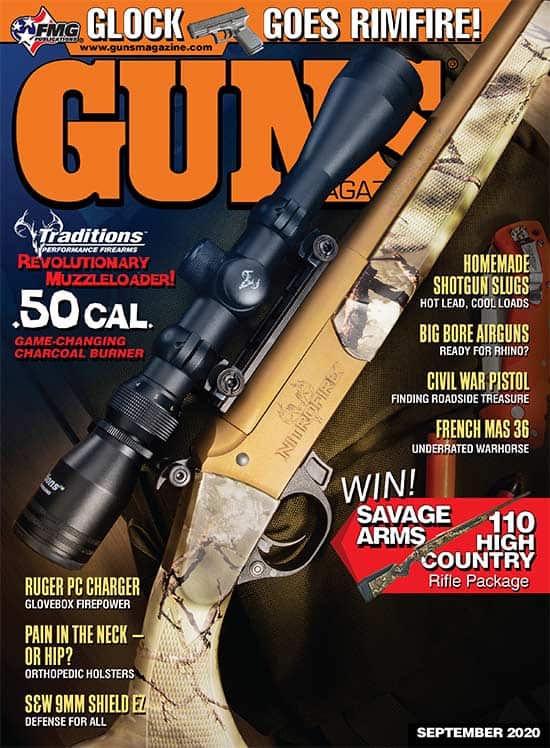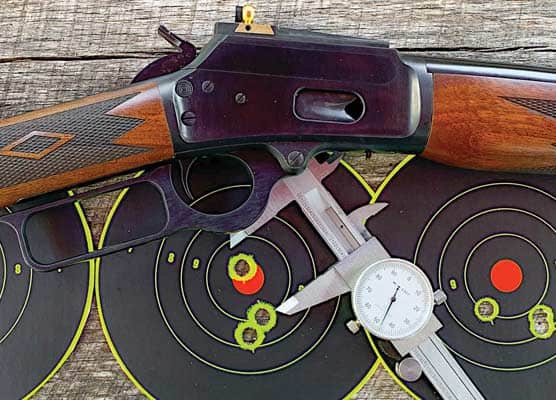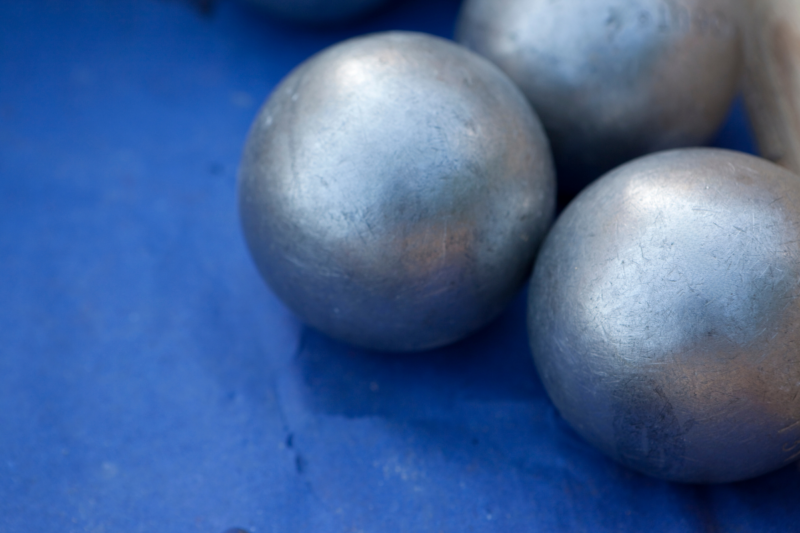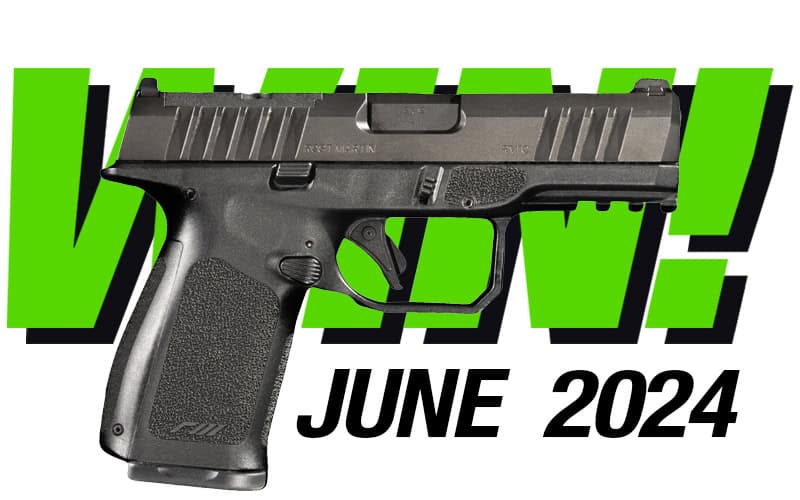Specs
Over the years the Model ’97 was manufactured in several grades from fancy walnut and hand engraved receivers to the no-frills riot and trench models. Barrel lengths included 30", 28", 26" and 20". Like most early pump shotguns the ’97 had a single action bar as opposed to the dual action bars found on more modern designs.
The gun came in fixed and takedown models. Shell capacity was five plus one in the chamber.
Takedown is accomplished by pushing in the pin located at the end of the magazine, turning the assembly counterclockwise and then rotating a quarter of a turn to the left. The barrel/magazine tube can now be separated from the receiver.
The riot gun had a simple bead sight. The trench gun added a ventilated handguard and bayonet lug.
The longer barrel version was used by farmers and hunters, while the riot guns were used by both lawmen and gangsters alike. The trench version was used to good effect by American Doughboys in World War I. In fact they were so effective the German government complained the Model 97 Trench Gun was illegal because “it is especially forbidden to employ arms, projections, or materials calculated to cause unnecessary suffering” as defined by the Hague convention.
An interesting side note — if the trigger is held to the rear, it will fire with each pump of the action.
The shotgun shown is my personal Model 1897 and is of the takedown type. A check with Winchester revealed the gun was made 1909. It is a “D” version, indicating the magazine follower is flat.
